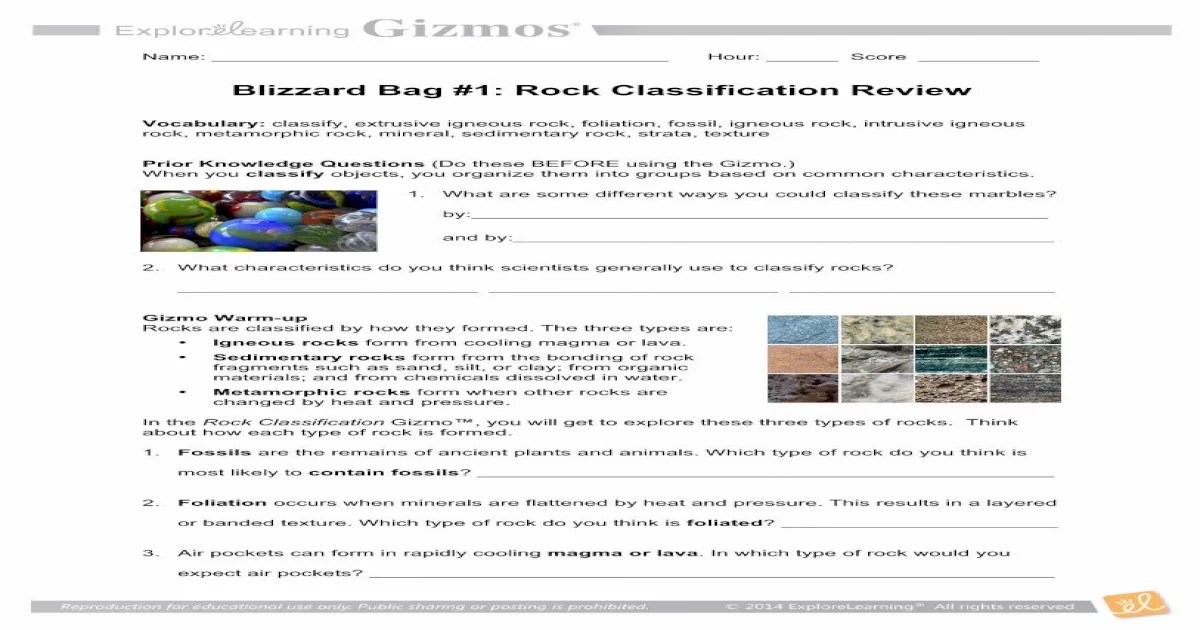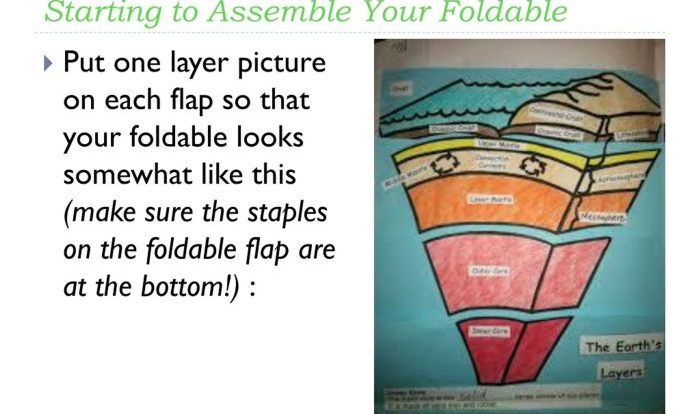Embark on a journey into the fascinating realm of rock classification with the rock classification gizmo answer key, your ultimate guide to unraveling the complexities of geology. This interactive tool empowers you to identify and categorize rocks based on their unique physical and chemical properties, providing a deeper understanding of the Earth’s geological processes and resource exploration.
Through the exploration of key rock properties such as texture, grain size, mineral composition, and color, you will gain insights into the formation and characteristics of igneous, sedimentary, and metamorphic rocks. The gizmo’s user-friendly interface and comprehensive database make rock classification accessible and engaging, enabling you to master this fundamental aspect of geology.
Rock Classification
Rock classification is a systematic way of grouping rocks based on their physical and chemical characteristics. It plays a crucial role in geology, allowing scientists to understand the formation, composition, and properties of rocks, as well as their significance in various geological processes and applications.
Rock Properties
The classification of rocks relies on identifying and characterizing their key properties, including:
- Texture: The size, shape, and arrangement of mineral grains within a rock.
- Grain size: The average diameter of mineral grains in a rock.
- Mineral composition: The types and proportions of minerals present in a rock.
- Color: The overall hue or shade of a rock, often influenced by its mineral composition and weathering.
Classification Schemes, Rock classification gizmo answer key
Rocks are classified into three primary schemes based on their mode of formation:
- Igneous rocks: Formed from the cooling and solidification of molten rock (magma or lava).
- Sedimentary rocks: Formed from the accumulation and compaction of sediments (e.g., sand, mud, organic matter).
- Metamorphic rocks: Formed when existing rocks undergo physical and chemical changes due to heat, pressure, or chemical reactions.
Igneous Rocks
Igneous rocks are formed when molten rock (magma or lava) cools and solidifies. They are classified based on their texture and mineral composition.
- Intrusive igneous rocks:Formed when magma cools slowly beneath the Earth’s surface, resulting in coarse-grained textures (e.g., granite, diorite).
- Extrusive igneous rocks:Formed when lava cools rapidly on the Earth’s surface, resulting in fine-grained or glassy textures (e.g., basalt, rhyolite).
Sedimentary Rocks
Sedimentary rocks are formed from the accumulation and compaction of sediments, which can be derived from various sources, including weathered rocks, organic matter, and chemical precipitates.
- Clastic sedimentary rocks:Formed from the accumulation and compaction of broken rock fragments (e.g., sandstone, conglomerate).
- Chemical sedimentary rocks:Formed from the precipitation of minerals from solution (e.g., limestone, gypsum).
- Organic sedimentary rocks:Formed from the accumulation and compaction of organic matter (e.g., coal, oil shale).
Metamorphic Rocks
Metamorphic rocks are formed when existing rocks undergo physical and chemical changes due to heat, pressure, or chemical reactions. These changes can alter the texture, mineral composition, and other properties of the original rock.
- Foliated metamorphic rocks:Exhibit a layered or banded appearance due to the alignment of minerals (e.g., schist, gneiss).
- Non-foliated metamorphic rocks:Lack a layered or banded appearance and have a more uniform texture (e.g., marble, quartzite).
Rock Classification Gizmo: Rock Classification Gizmo Answer Key
A rock classification gizmo is a virtual tool that allows users to identify and classify rocks based on their physical and chemical properties. It typically includes:
- Property sliders:Users can adjust sliders to specify the texture, grain size, mineral composition, and color of a rock.
- Classification results:The gizmo displays the classification of the rock based on the specified properties.
- Interactive examples:The gizmo often provides interactive examples of different rock types to aid in learning and understanding.
Applications

Rock classification has numerous applications in various fields, including:
- Geology:Understanding geological processes, mapping rock formations, and identifying potential mineral resources.
- Engineering:Selecting suitable rocks for construction, road building, and other infrastructure projects.
- Environmental science:Assessing soil quality, groundwater resources, and the impact of human activities on rock formations.
Expert Answers
What is the purpose of a rock classification gizmo?
A rock classification gizmo is an interactive tool that helps identify and classify rocks based on their physical and chemical properties, providing insights into their formation and geological significance.
What are the key properties used to classify rocks?
Rocks are classified based on properties such as texture, grain size, mineral composition, and color, which provide clues about their formation and geological history.
What are the different rock classification schemes?
The three main rock classification schemes are igneous, sedimentary, and metamorphic, each categorizing rocks based on their mode of formation and geological processes.
